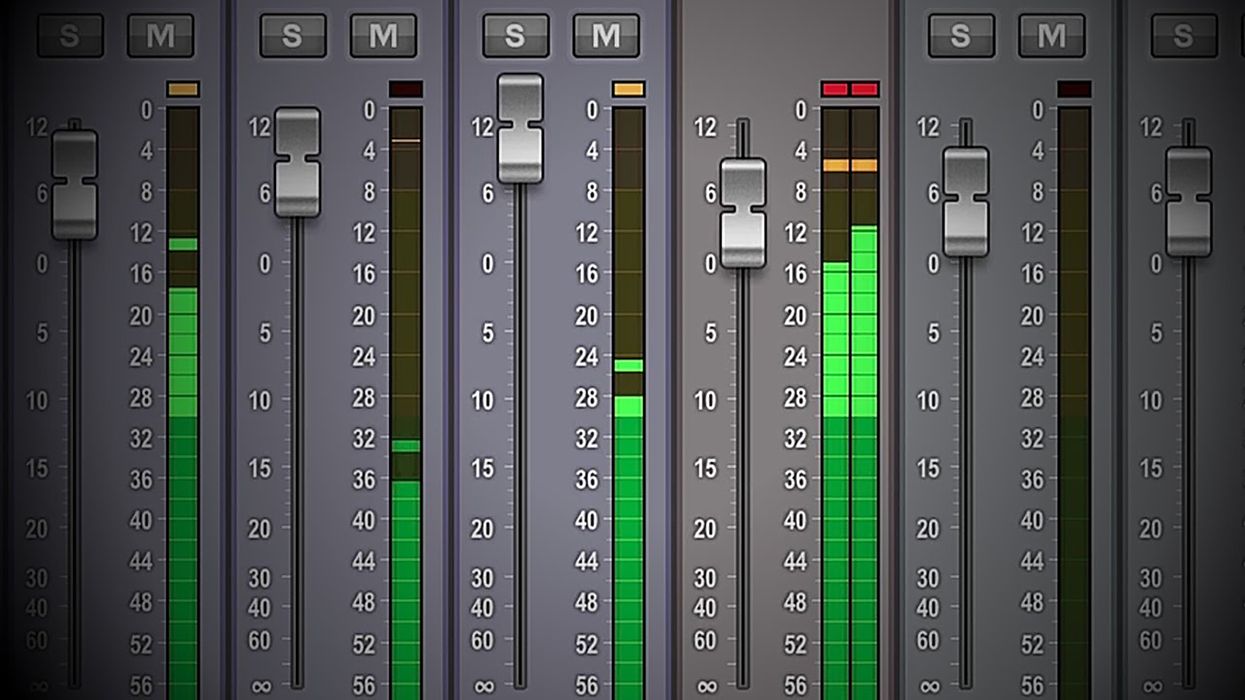Hello, and welcome to another Dojo. Last month, I focused on the history and development of the VU meter, and then defined some of the more confusing terms regarding decibels (dB, dBu, dBA, and dBSPL), as well as various ways to measure loudness and amplitude. I also asked: “Is a 100-watt amp twice as loud as a 50-watt amp?”—the answer shall be revealed presently. But first, I’m going to focus on a relative newcomer to the scene: dBFS. Tighten up your belts, the Dojo is now open.
More dB Terms?
What is dBFS? It is relegated to the digital realm, and whenever you hear this term, I want you to remember the following joke: “What sounds better than digital distortion? Everything!”
You see, dBFS (decibels full scale), is the unit of measurement for amplitude within a digital system (such as your DAW), and all digital systems have a maximum peak level before clipping (overload) occurs. A reading of 0 dBFS is the highest signal level achievable for a digital audio. Unlike the analog world, where brief moments of being “in the red” of the VU meter won’t adversely affect the audio, dBFS digital “overs” are squared off (or, mercilessly guillotined), and clipping occurs. It sucks, and is to be avoided at all times. The audio irony is that, when or if you see those two teeny-tiny rectangles above your master fader turn red (Fig.1), you’ve got big problems, and need to turn everything down in order to avoid clipping when you bounce/render your mix.
Is a 100-watt amp twice as loud as a 50-watt amp?
I’m going to answer this by helping you learn some more about how we perceive loudness, and I’ll be using dBA as our mode of measurement. Because, as you’ll recall from last month, using dBFS treats all frequencies equally, and that’s not how the human ear works. In other words, our sensitivity to frequency, sound level, and duration vary across our general range of hearing (20 Hz to 20 kHz). Specifically, our hearing has evolved to be most sensitive between the approximate ranges of 2 kHz and 5 kHz.
Using this range as a yardstick, audiologists agree that 3 dB (up or down) is the minimal detectable change the average person can hear. In my experience, in a critical listening environment, I—and anyone else in the studio—can easily hear 1 dB changes—this especially happens when mixing and mastering.
“The audio irony is that, when or if you see those two teeny-tiny rectangles above your master fader turn red, you’ve got big problems.”
However, to increase the sound, 3 dB requires twice the power (intensity). An increase of 6 dB requires twice the amplitude (voltage), and an increase of 10 dB sounds to the human ear twice as loud. Stated another way: +3 dB is 2x the acoustic power, +6 dB is 4x the acoustic power, and +10 dB is 10x the acoustic power. For those who are mathematically inclined (I am not), here is the decibel formula: dB = 10log10 (S1/S2), where S1 and S2 are the intensity of the two sounds.
Remember when I said last month that decibels are based on a ratio, and they are logarithmic? Now we want to look at the relationship of decibels and power. What is the international unit of measurement for power? It’s the watt (W), named after Scottish inventor James Watt (1736–1819). Check out these relationships:
| Number of Decibels | Relative Increase of Power |
| 0 dB | 1x |
| 3 dB | 2x |
| 10 dB | 10x |
| 20 dB | 100x |
| 30 dB | 1,000x |
| 50 dB | 100,000x |
| 100 dB | 10,000,000,000x |
So, let’s say we have a lovely vintage 4x12 cabinet, and we have two amps that we are going to run through it—a 50-watt head and a 100-watt head (both with matching impedance). Using this relationship, we can answer our previous question! Our 50-watt head is the starting point and baseline for measurement.
Let’s say that, as we play our latest epic jam through our dimed 50-watt head, our drummer comes over and says, “It’s not loud enough! They can’t hear it in the parking lot of the Waffle House across from the stadium!” So, we switch to the 100-watt head thinking it will be twice as loud. Wrong! Go back and look at the chart above. We’ve doubled the power (2x) and that only gained us a paltry increase of 3 dB! That’s right, a 100-watt amp is only 3 dB louder than a 50-watt amp. So, what would be twice as loud? Do the math—we’d need a 10x increase in watts (50 W × 10), so a 500-watt amplifier (or 10 dimed 50-watt amps, simultaneously) would be needed! (Yes, but do they go to 11?)
Until next time, namaste.














